Description
napurrawuy-2 wununmurra
Earth pigments on Stringybark
82 x 34cm
Year: 2025
ID: 2387-25
Gulutji
Before the advent of modern communications, transport and rather static community living the bone remains of Yolŋu dead were after time placed in Larrakitj (hollow logs) as the final of mortuary rites.
A Yolŋu died. Extended family connected by complex systems of kin had to be notified so that they could participate in formal ceremony. Initial rites commenced while message of the death was got to others. Initial rights dealt with the rid of malevolence of spirit found in the soft tissue parts. The cleansing of the deceased’s bones by the elements helped in this, the contamination of death kept at bay by the use of shallow sand graves or raised platforms. The essence of the spirit for Yolŋu is within the bone and it is the final rites of mortuary ceremony that provides its release. The bones may then be coloured with ochre, wrapped in paper bark to be placed within the hollow log. In turn the log and its content is stood in the bush, sacred miny’tji (clan design) identifying to the spirit world the deceased spiritual origins. The unit would in time disintegrate about itself, back to the mother earth.
This sacred diamond design for the Dhalwaŋu clan reflects the patterning of water streaming from the body of Ancestral Creator Being Barama has he emerged from these waters at Gäṉgän, with weed hanging from his arms. Today appropriately senior ritual participants wear sacred feathered strings from armbands, their chest painted with the Dhalwaŋu design of freshwater. These totemic ancestors of the Dhalwaŋu clan are all associated with this site at Gäṉgän from which all Yirritja creation began. They are seen as embodiments of the disciples or companions of Barama and himself.
The manifestation of Barama is the long neck turtle and chief totem for the Dhalwaŋu – Minhala. Another totem – Dhakawa – the freshwater crayfish in times before the first morning, dug the waterhole with its tail, muddying the water. It continues to reside under the waters keeping the sacred font clear with its huge tail.
It was in a period called Wangarr, the world creation drives of the first mornings, when the Ancestral Beings came to country to give lore and title for the land and its people. The Yolŋu world is based on a duality, of two moieties of equal status that integrate through a complex system of kinship. Clan groups in this area known as Miwatj country belong to either the Yirritja or Dhuwa moieties. The Dhalwaŋu clan has its origins where the Yirritja creator Beings first gathered at Gäṉgän.
Barama came to Gäṉgän from the saltwater country of Blue Mud Bay to emerge from the waterhole named Gulutji with the intention of establishing his law amongst the people there of that time. These original Dhalwaŋu referred to as the Banatja were said to be led by Galparimun who received counsel from Barama. A third player of law in these times was Lany’tjuŋ who walked to Gäṉgän meeting up with Barama.
Barama brought with him to Gäṉgän the hard wood raŋga (sacred objects) that had instilled in them the sacred knowledge pertaining to his law. Also on his body he had the marks left by the waters from where he had come, the sacred miny’tji that was later to become the sacred clan designs for the Yirritja moiety. Barama had with him the knowledge of a highly sophisticated system of kinship mapping out associations between clans, country, individuals, all things physical and metaphysical, laws that govern these associations and ritual that included sacred song and dance to ensure its maintenance and miny’tji to claim title to land effected by specific events taking place during these times.
This deep seated knowledge is held today in propriety by the most senior within the clan and safeguarded by Djuŋgaya or caretakers of an appropriate kin of the other moiety. The philosophies of ancient law are ‘graded’ into differing levels of meaning that is progressively divulged to the Yolŋu as part of age grading. The deepest of knowledge is found in the inner most sanctums of Yolŋu society and kept secret.
Before they went the sacred Ŋarra ceremony for the Dhalwaŋu was performed on the Yalandu ground at Gäṉgän. The Ŋarra ceremony focuses on clan identity – the Dhalwaŋu had to be given theirs.
Where Galparimun remained faithful to this edict Lanytjuŋ after reaching Milingimbi openly revealed his power and knowledge eliciting jealousy and angering Barama. Lanyt’juŋ was killed, such is traditional punishment, his mortuary ceremony followed where his spirit was seen to go into a paperbark tree. A rolled wad of paperbark was made by the ceremonial participants for Lany’tjung and is used by beating onto the ground at Ŋarra ritual.

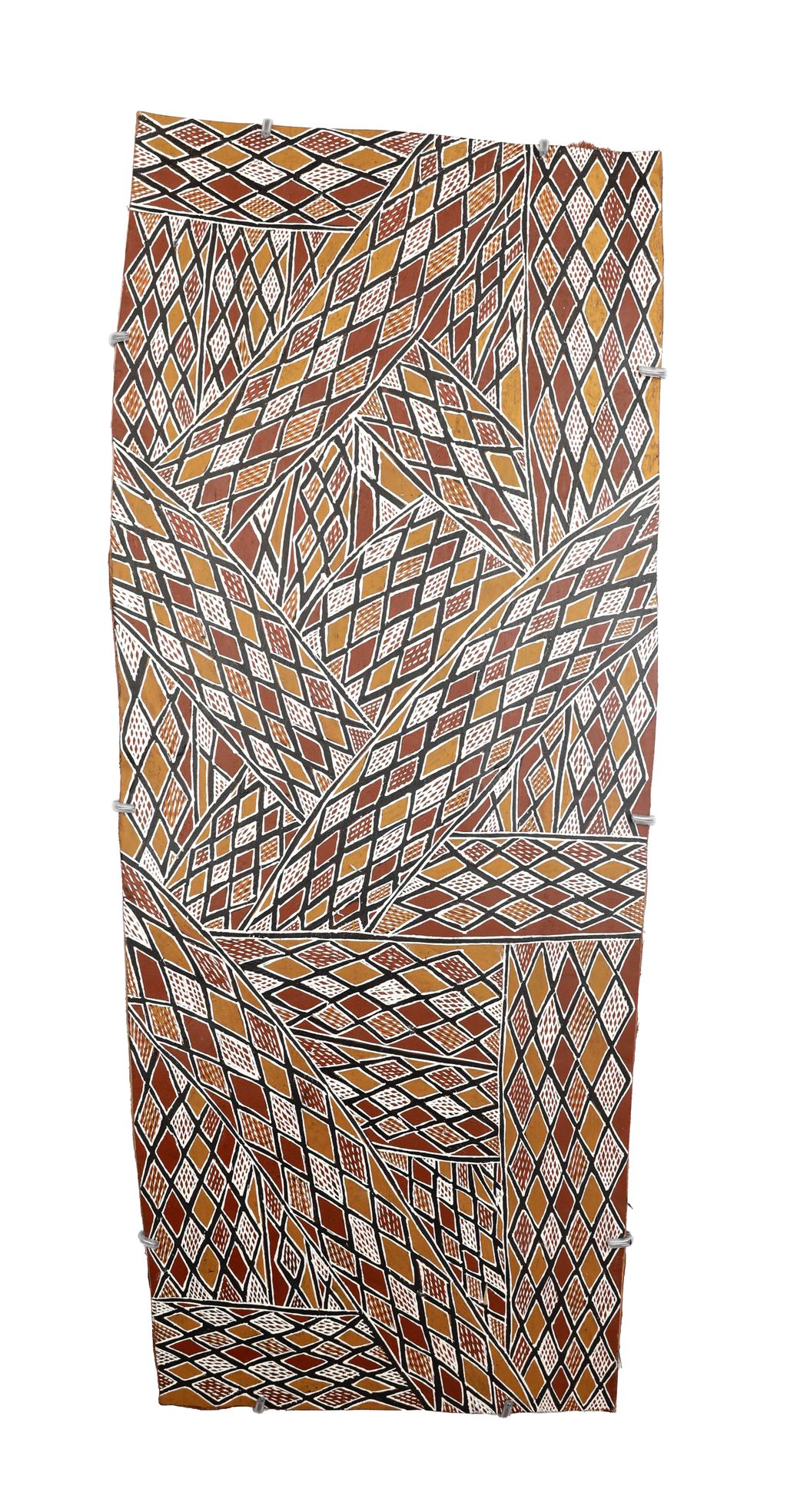
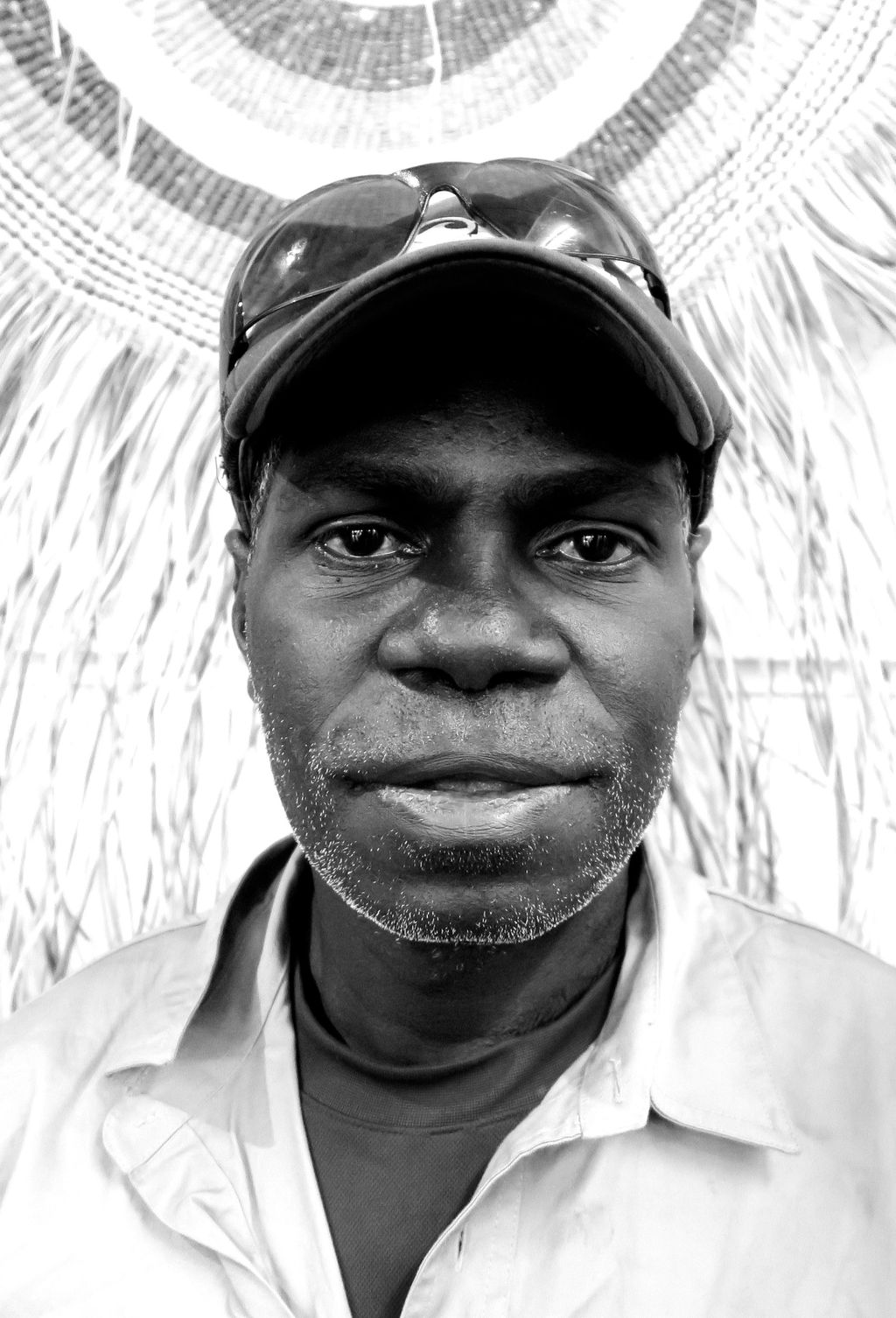
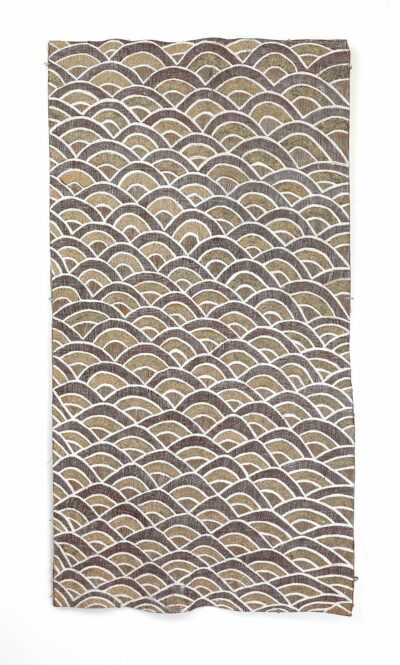
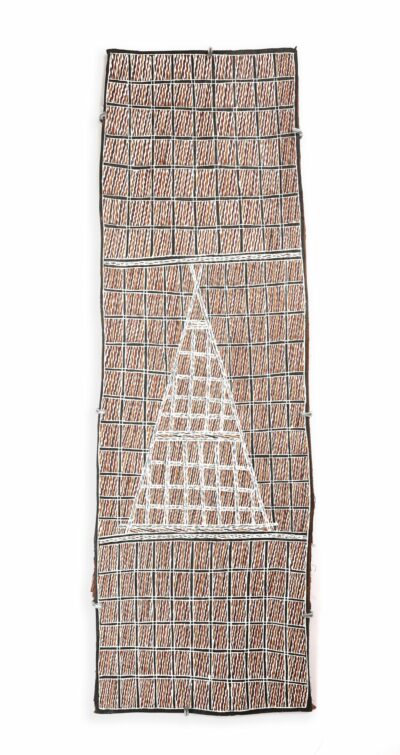
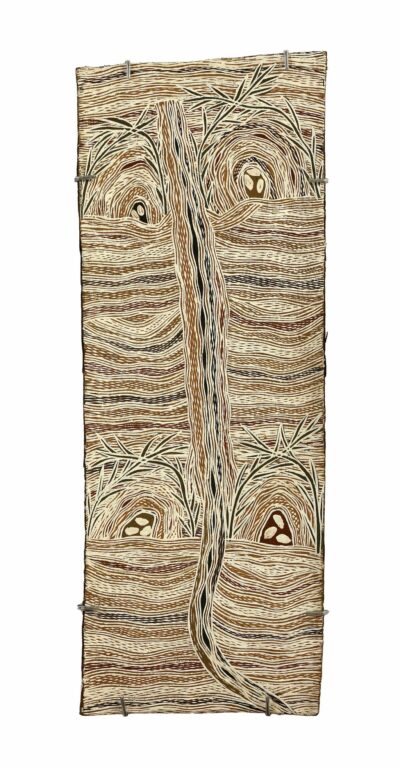
Reviews
There are no reviews yet.